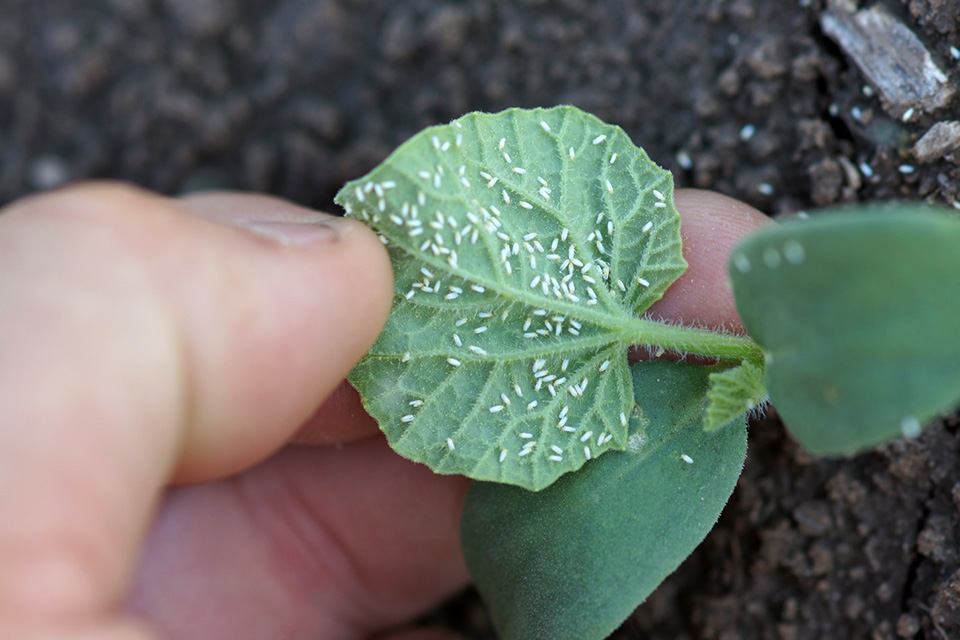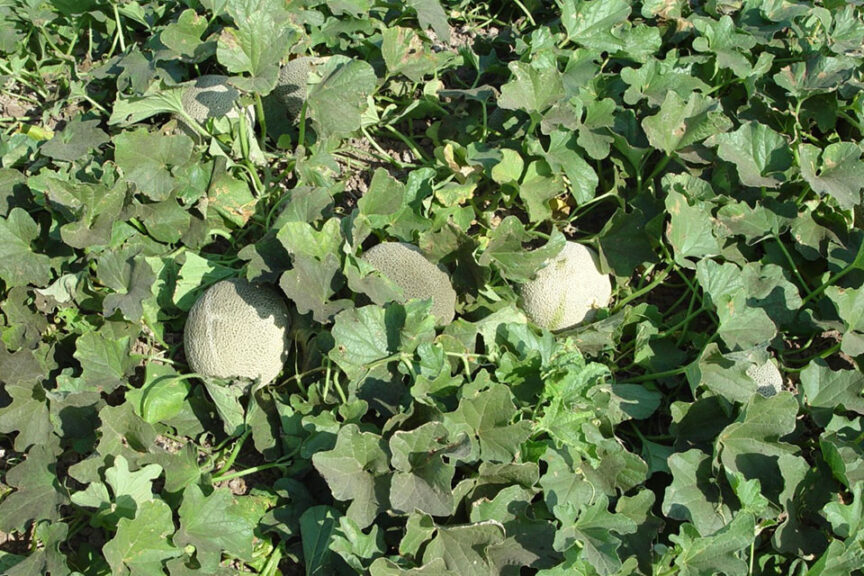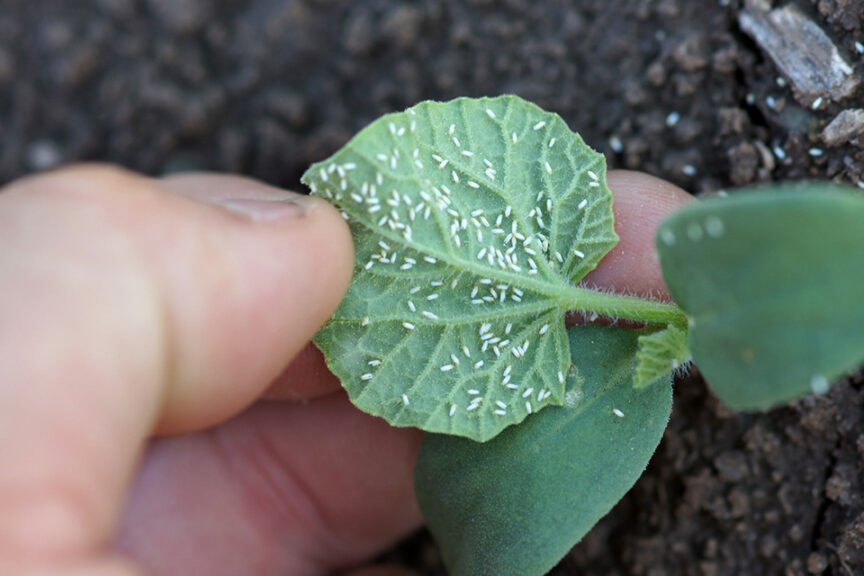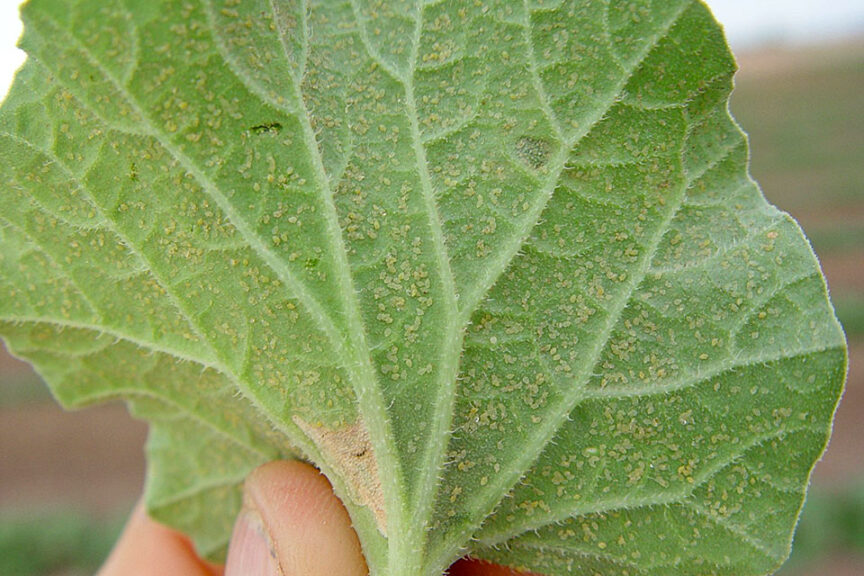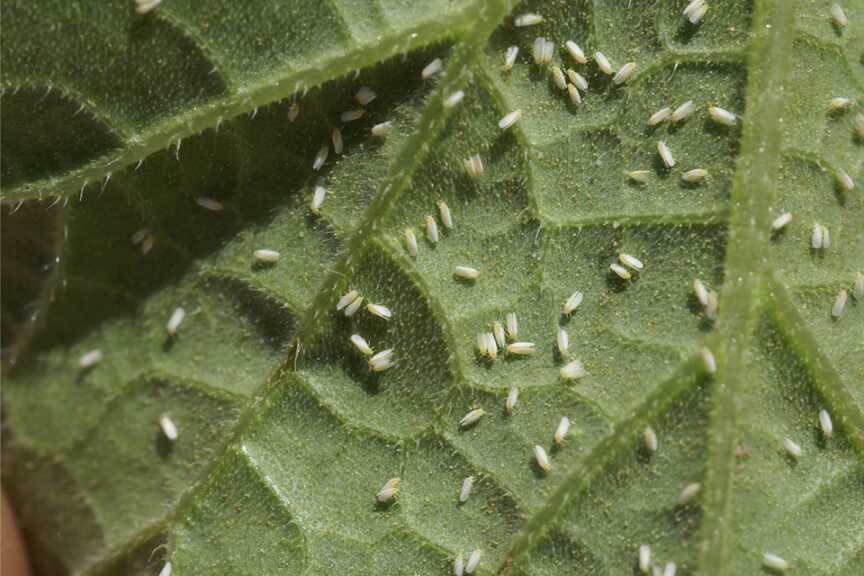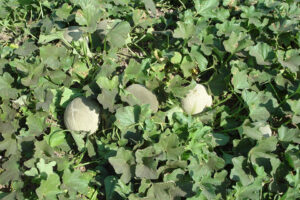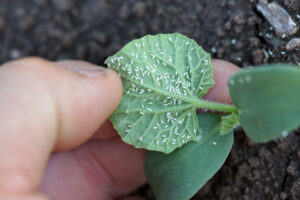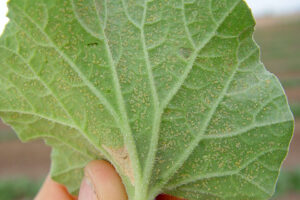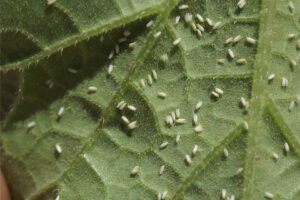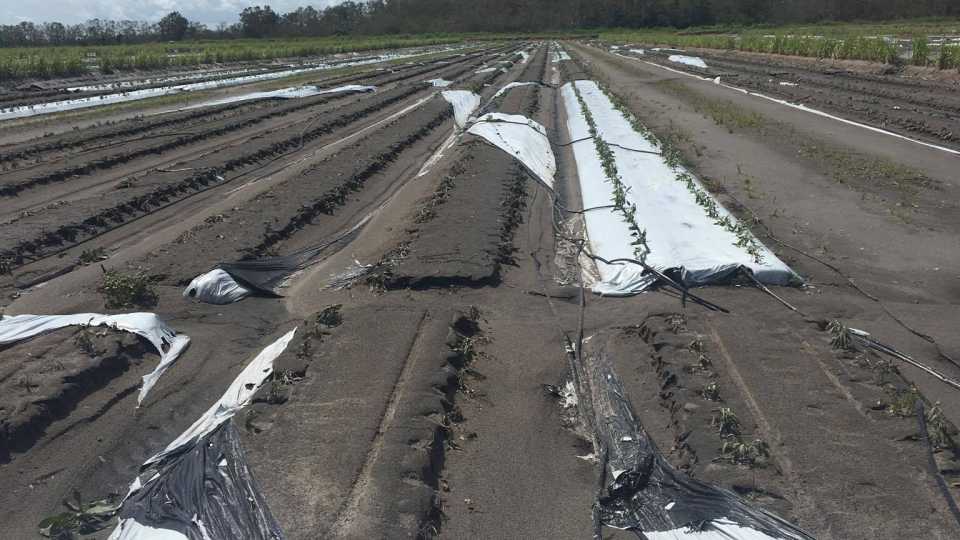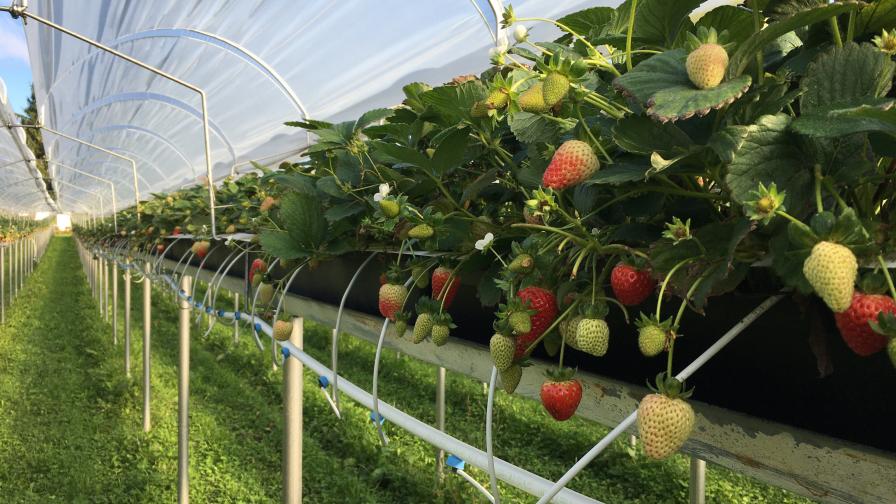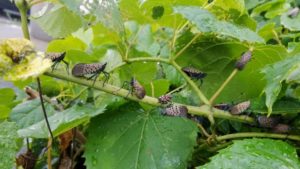Helpful Tips for Whitefly Management in Melons
The sweetpotato whitefly, Bemisia tabaci, can cause significant melon crop losses and result in excessive insecticide use. Adults and nymphs feed on the undersides of melon leaves by inserting their piercing/sucking mouthparts into vascular tissue and extracting plant juices that will reduce fruit quantity and size.
Feeding nymphs can lower soluble sugars in the fruit and contaminate mature fruit with honeydew and sooty mold. Adult whiteflies can vector several plant viruses, such as cucurbit yellows stunting disorder virus (CYSDV).
Preventing whitefly populations from colonizing plants is essential for successful management. You can use several control tactics effectively against both adults and nymphs. Here are practical tips based on research in Arizona and California.
Optimize Growing Practices
To avoid crop stress, properly manage irrigation, plant nutrition, and salinity. We’ve learned a vigorously growing plant better withstands whitefly feeding, especially early in the season.
Carefully consider crop placement and planting dates to minimize adult whitefly populations near your melon fields. When practical, we recommend that growers avoid planting near other significant whitefly host crops such as alfalfa, cotton, tomatoes, peppers, or cole crops. Delaying planting melons until after harvesting these crops can also reduce adult migration onto emerging melon seedlings.
Sanitation and clean culture are perhaps the most important cultural practices you can employ in and around melon fields. Whiteflies have a broad host-range and are known to colonize hundreds of crop and weed species.
Host crops approaching harvest are usually the primary sources from which adult whiteflies migrate onto melon crops. Thus, rapidly destroying host crops postharvest can reduce the magnitude and duration of whitefly movement.
You also need to eliminate weed hosts in and around your fields, particularly in the winter. They can serve as overwintering reservoirs for both whiteflies and viruses.
Fabric row covers can decrease whitefly infestation and severity of viruses, especially on fall melons. However, deploying these covers is often labor intensive and expensive, and they must be removed prior to pollination.
Insecticides Often Necessary
Although cultural control helps avoid whitefly problems, insecticide applications are the most immediate and direct approach to controlling whiteflies in melons.
Soil systemic and foliar-applied insecticides help prevent adults and nymphs from becoming established on plants. Applying soil, systemic insecticides is the industry standard for control of whiteflies in cantaloupes, honeydews, and watermelons.
The most common systemic insecticides used are imidacloprid (Admire Pro from Bayer Crop Science and generic formulations), thiamethoxam (Platinum, Durivo, both from Syngenta), dinotefuran (Venom from Valent, Scorpion from Gowan) and flupyradifurone (Sivanto from Bayer Crop Science). Apply them as a soil, shank injection, as chemigation during germination, or as a transplant drench.
When the residual activity of soil systemic applications begins to diminish, you can use several effective foliar-applied insecticides with trans-laminar activity, which allows the active ingredient to reach adults and nymphs feeding on underneath leaves.
Neonicotinoid foliar products, such as acetamiprid (Assail from United Phosphorus), and dinotefuran (Venom, Scorpion), can provide residual control (7 to 14 days) of both adults and nymphs. The neurotoxic feeding blockers pyrifluquinazon (PQZ from Nichino) and afidopyropen (Sefina from BASF) quickly stop adult feeding and can significantly suppress transmitting viruses like CYSDV. They are also safe to use around pollinators.
Cyantraniliprole (Exirel from FMC and Minecto Pro from Syngenta) is another alternative against both adults and nymphs with good residual control. In addition to whiteflies, cyantraniliprole will also control leafminers, cabbage looper, and beet armyworm commonly found infesting melons.
Insect growth regulators have selective activity against whitefly nymphs, including buprofezin (Courier from Nichino), pyriproxyfen (Knack from Valent), and an IGR-like compound spiromesifen (Oberon from Bayer Crop Science). Their modes of action are not neurotoxic but rather disrupt insect hormonal or physiological functions. Consequently, they are slow acting, but can provide long residual whitefly control.
Protect Pollinators
Because cantaloupes, honeydews, and watermelons are monecious, they need honeybees to produce high-yielding melon crops. Take extreme caution with pesticides to prevent destroying pollinators when plants are flowering.
If applications are necessary during bloom, apply the insecticide that is least toxic to bees and will still control whiteflies. It is always important to avoid applying insecticides during daylight when honeybees are actively working in fields.





